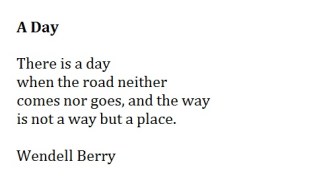I’ve been thinking about darkness.
In part, that is because there has literally been so much darkness during these last several weeks. Even as January arrives, the nights are still long. We are in the dark far more than the light.
But there has also been a different kind of darkness in the air lately. It’s the darkness that goes along with the disruption of the way we live our lives.
The stock market has got the jitters. Immigrants are corralled into makeshift camps. American foreign policy seems confused. A government shutdown throws people into peril.
And, to be honest, the president can’t stop tweeting. The messages often arrive before the sun has risen. He sits in the dark. He is angry and that scowl of his casts a shadow over our land.
I know I’m not the first to note the president’s behavior. A few weeks ago, The Washington Post described his mood in these words, “Trump was mad – steaming, raging mad.”
The particular circumstance barely matters because, as we have come to know, the president is often angry. That is how he was during the election process when he found ways to insult political opponents. That is pretty much how he has continued to conduct himself in office. One of his employees from as far back as the 1980’s remembers, “the emotional core around which Donald Trump’s personality circles is anger.”
No wonder I’ve been thinking about darkness. It surrounds us.
But it needn’t be so.
Although anger can sometimes motivate us to action, there are other ways to imagine our lives.
I am thinking, for example, about the ways in which various American leaders have moved us to action in the past.
The year is 1984. Ronald Reagan is running for re-election. One of his campaign ads strikes the tone that would lead him back to the White House. The commercial featured images of Americans going to work under a rising sun. The text read, “It’s morning again in America.”
Whether or not you voted for Reagan, you can’t help but feel how he communicated with the country. There was light. There was a sense of purpose and unity.
Much the same holds true for John Kennedy who spoke about a “new frontier” when he ran for president. Kennedy was all about energy and change. He didn’t condemn the country. He rather inspired Americans with his challenge, “Ask not what your country can do for you. Ask what you can do for your country.”
There was darkness in America when Kennedy was president. He himself was assassinated, but the tone of his leadership inclined towards the light.
Which is what can also be said about Dr. Martin Luther King Jr. whom we celebrate this month with a day devoted to his accomplishments.
Dr. King lived in tumultuous times. Tear gas, bullets, and threats were his reality. But the amazing thing about him as a leader is that he never let anger get the better of him. As dark as it might be around him, Dr. King offered hope.
The night before he died King declared that he had been to the mountain top and seen the Promised Land. What’s more, he promised his followers that, even if he did not get there with them, they would get to the Promised Land.
His very last public words that evening were an inspiration. As dark as the next day would be, King affirmed, “Mine eyes have seen the glory of the coming of the Lord.”
There was no darkness in Dr. King’s dream.
In fact, that is what makes his most famous public moment so memorable. It was August 28, 1963. Over 250,000 people had assembled in Washington for a huge march on behalf of freedom. A series of speakers had said just about all that could be said regarding the politics of the matter when Dr. King came to the podium.
He didn’t talk about pain or fear. He just led those present and the nation by proclaiming he had a dream. He saw a better world. He saw a transformed world. There would come a time when everyone would be able to say, “Free at last. Free at last, Great God, all mighty. We ae free at last.”
That is leadership. That is vision.
It’s not dark and angry. It’s bright and whole. It’s the kind of “dream” our country needs as 2019 gets underway.
—
Rabbi Mark Dov Shapiro has served congregations in Springfield, MA, White Plains, NY, and Toronto. He is also the editor of Gates of Shabbat: A Guide for Observing Shabbat, published by CCAR Press in 1996.









